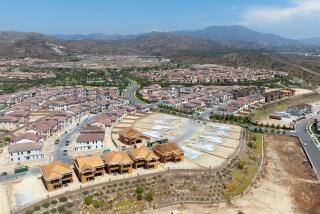Coast Plan Matures Over Decade
In early July, 10 years ago, the Orange County Planning Commission approved a development plan for the Irvine Co.’s undeveloped coastal land between Corona del Mar and Laguna Beach. But that plan never won final approval from the state’s Coastal Commission. Last Tuesday, the county Planning Commission again approved a plan for the development of the same land, this one calling for more open space and lower density. What a difference a decade made.
The picturesque piece of private shoreline covers about 9,400 acres and includes one of the most valuable pieces of undeveloped, private, scenic shoreline remaining in Southern California. As such, its development has naturally drawn close scrutiny from county and state officials, environmentalists and the public. But never before have they been able to agree on a specific plan.
The first development plan for the land was submitted in 1964. It called for too many residents and too little open space. Subsequent plans were also found lacking and failed to bring the public and private sectors together.
Now, after more than two decades of planning, hearings, approvals, rejections and revisions, it looks as though a compromise has finally been worked out that will be acceptable to all interests--the company, the county, the state Coastal Commission and environmentalists who have tied up development of the property for years.
At least it has passed the Planning Commission and has drawn words of praise from all other quarters after the Irvine Co. agreed to add another 252 acres of open space to raise the project’s total open space to 2,902 acres, nearly one-third of the total acreage involved. Earlier plans of the 1960s called for as many as 21,500 dwelling units. The current compromise contains 2,600 residences. It also includes four hotels with a total of 2,150 rooms and commercial retail space. The Board of Supervisors is expected to consider the plan later this month and then, if approved by the board, it goes on to the state Coastal Commission for final action.
Balancing public and private interests on so vast and valuable a piece of property is not easy. The fact that the new plan finally seems to be achieving the balance is testimony to the community’s determination to fight any plan that shortchanges the environment, and serves as an example to other developers on the importance of including the public in its planning process.
More to Read
Sign up for Essential California
The most important California stories and recommendations in your inbox every morning.
You may occasionally receive promotional content from the Los Angeles Times.









